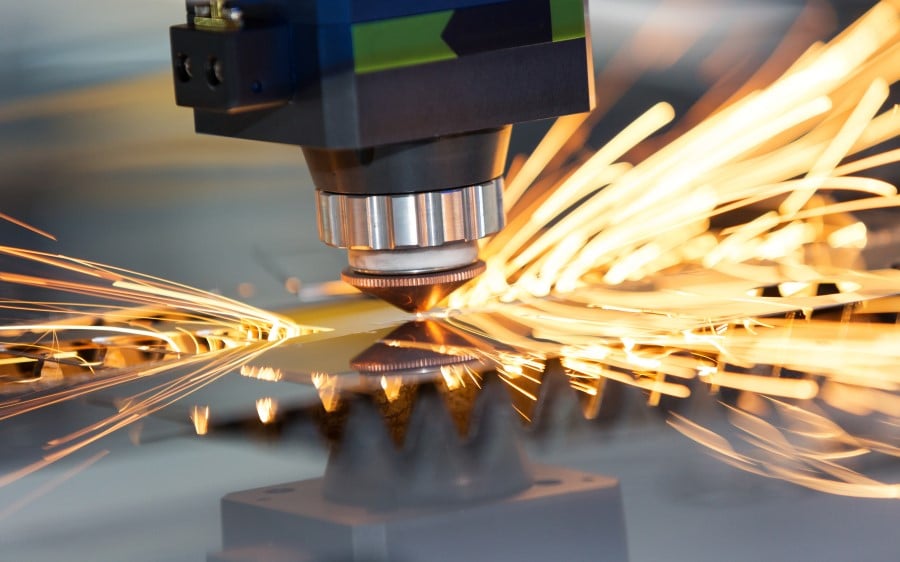About This Webinar
Laser welding has developed into one of the most used joining techniques in sheet metals for applications such as car bodies, medical devices, sensors, batteries, and more. To create successful welds in a serial production, many parameters must be kept within a defined window of specifications, created once during initial development of the process. Some major parameters that must be met include laser power at the workpiece, laser beam quality, focal plane, beam properties, clean status of optics, hitting the seam, cleanliness of the parts, a gap between the parts, welding speed, and machine accuracy.
Some of these parameters need to be checked preprocessing to avoid scrap parts that have already consumed resources such as energy and material as well as a slot in the production line. With increased usage of higher-cost materials such as copper and aluminum, it is essential to know how the laser functions as a tool when operating. Other parameters should be measured and monitored during the process, or after the part is welded, to avoid possible failures like cracks in the weld, false friends with no joint, and welds that are not capable of handling the force applied.
In this presentation, speakers from Ophir and Lessmüller join forces to offer a full picture of the necessary and possible measurements needed during the laser welding process. Markus Ruetering from Ophir contributes his expertise in laser measurement addressing power, beam, and caustic while Richard Steinbrecht from Lessmüller provides insights from the company's expertise as a major contributor for process monitoring during and after the laser welding process.

Who should attend:
Engineers, manufacturers, and R&D scientists who are interested in laser welding and metrology. Those who work with cameras, detectors, lasers and laser systems, or manufacturing equipment in industries such as aerospace, automotive, defense, medical, or semiconductors.
About the presenters:
 Markus Ruetering knows the laser industry from a variety of perspectives. As an engineering graduate, he started his career in R&D at ROFIN-SINAR before steadily moving in the direction of sales management. During his 22-year tenure with the laser manufacturer, Ruetering held various management positions. He then moved to Laserline, where he was responsible for the company's worldwide sales and marketing as sales director. An experienced manager and laser expert, Ruetering currently serves as vice president of sales & service at MKS Ophir for Europe, the Middle East, India, and Africa (EMEIA).
Markus Ruetering knows the laser industry from a variety of perspectives. As an engineering graduate, he started his career in R&D at ROFIN-SINAR before steadily moving in the direction of sales management. During his 22-year tenure with the laser manufacturer, Ruetering held various management positions. He then moved to Laserline, where he was responsible for the company's worldwide sales and marketing as sales director. An experienced manager and laser expert, Ruetering currently serves as vice president of sales & service at MKS Ophir for Europe, the Middle East, India, and Africa (EMEIA).
 Richard Steinbrecht has over 30 years of experience in laser welding, cutting, and automation. His career has spanned a variety of sales, production, and general management roles for such companies as Baasel Lasertechnik, Rofin-Baasel Lasertechnik, and Trotec Laser Automation. He currently serves as managing director at Lessmüller Lasertechnik. Steinbrecht holds a degree in mechanical engineering from the Technical University of Munich (TUM).
Richard Steinbrecht has over 30 years of experience in laser welding, cutting, and automation. His career has spanned a variety of sales, production, and general management roles for such companies as Baasel Lasertechnik, Rofin-Baasel Lasertechnik, and Trotec Laser Automation. He currently serves as managing director at Lessmüller Lasertechnik. Steinbrecht holds a degree in mechanical engineering from the Technical University of Munich (TUM).
About Ophir MKS:
Ophir is a brand within the MKS Instruments Photonics Solutions division. The Ophir product portfolio consists of laser and LED measurement products, including laser power and energy meters, laser beam profilers measuring femtowatt to hundred-kilowatt lasers, high-performance IR and visible optical elements, IR thermal imaging lenses and zoom lenses for defense and commercial applications, OEM and replacement high-quality optics and subassemblies for CO2, and high-power fiber laser material processing applications. Ophir products enhance their customers’ capabilities and productivity in the semiconductor, industrial technologies, life and health sciences, research, and defense markets.
About Lessmüller Lasertechnik:
Lessmüller Lasertechnik GmbH was founded in 1990 as a technology company. Since then, the company has developed into the market leader for quality monitoring systems in laser welding processes. By using photodiodes, camera systems with controlled extraneous light, and optical coherence tomography, they offer customers the appropriate solution for their tasks and thus contribute to the precise quality assurance of laser welding processes.